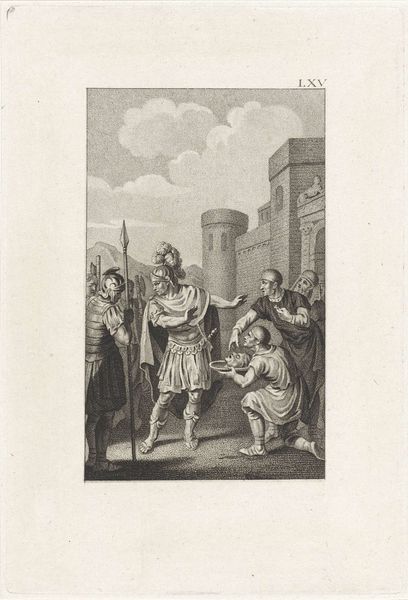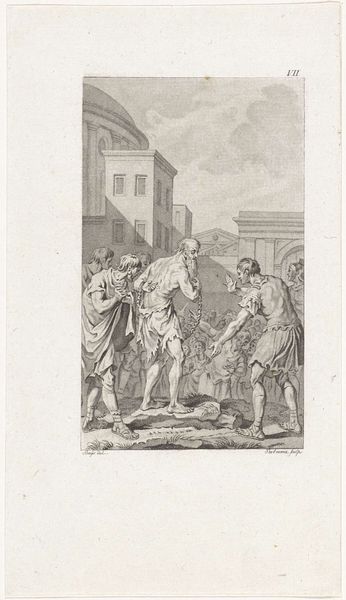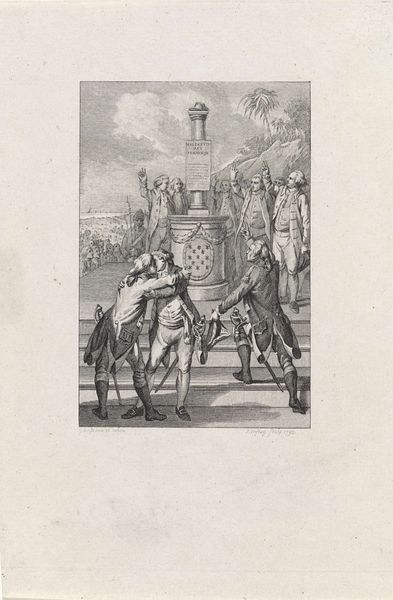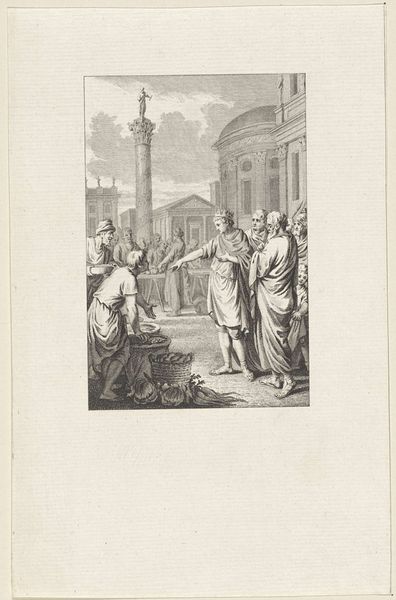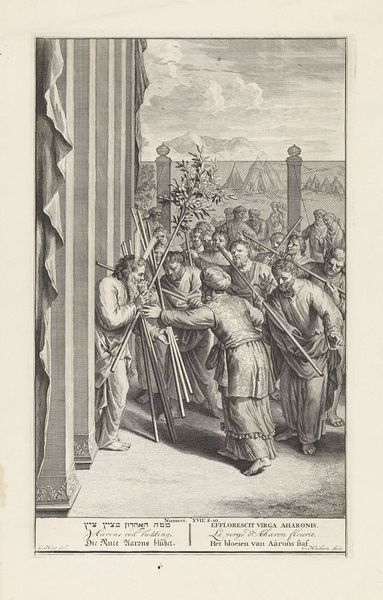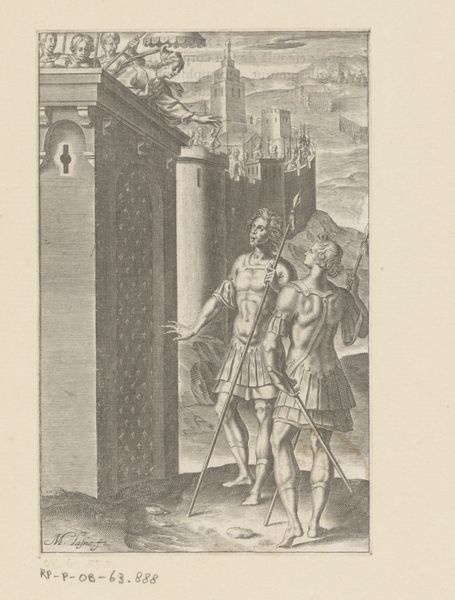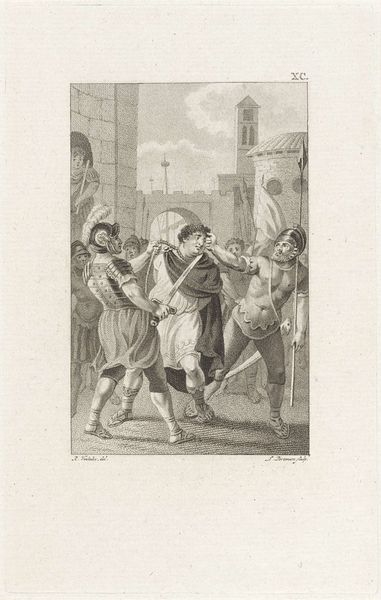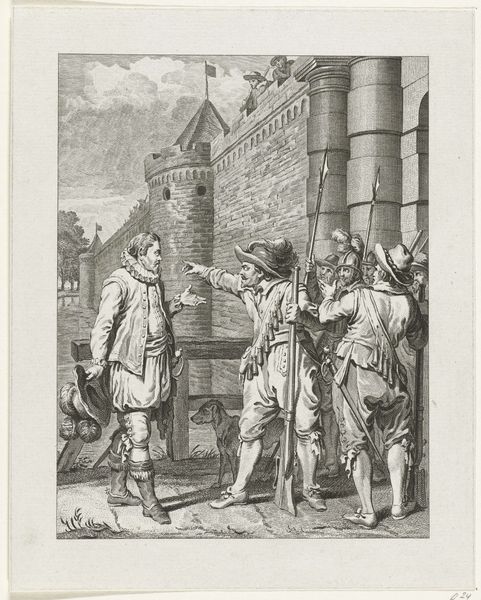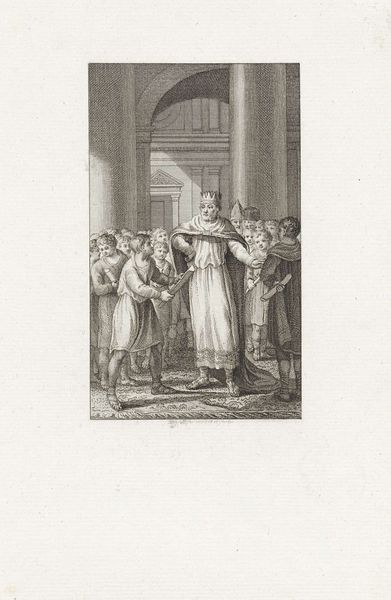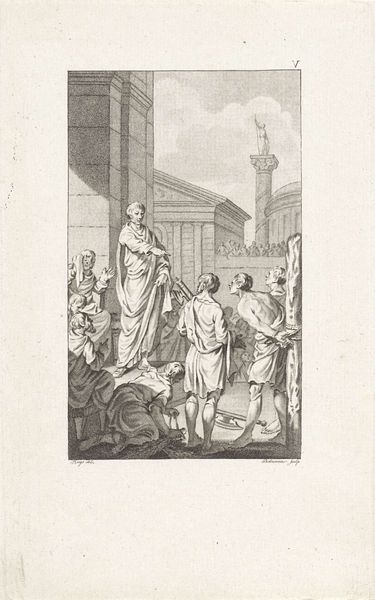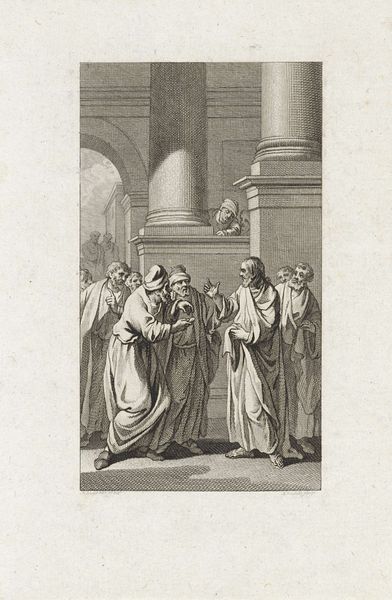
Dimensions: height 250 mm, width 164 mm
Copyright: Rijks Museum: Open Domain
Editor: Here we have Reinier Vinkeles' 1806 engraving, "Keizer Lodewijk II leidt de paus op zijn paard," currently held at the Rijksmuseum. It’s an intricate print. I’m immediately struck by the composition—the power dynamic seems central to the scene. What can you tell me about this work? Curator: This image is a fascinating example of how power is visualized through symbols and staging. Notice how the figures and objects arranged around Louis II and the Pope serve to broadcast an idea about authority. Editor: So the Pope on the horse suggests dominance? Curator: Precisely, but what does it mean when Louis II leads the horse? The action places the Emperor in a posture of respect and service toward the Pope, communicating submission to the church's spiritual authority. Think of the historical context too - How does this play into medieval relations between the papacy and the Holy Roman Emperors? Editor: I see, so it's about conveying the complex relationship between church and state through symbolic action and setting? Are the figures in the background also carrying specific meaning? Curator: Absolutely. Consider the religious banners with crosses, the figures carrying spears, each carefully placed to build an overwhelming statement about hierarchy, about religious and martial strength working in concert. Consider also the classical architectural elements—what memory are these alluding to? Editor: I now realize that the figures and objects aren't just details, but are crucial symbols working together to express the cultural narrative of that historical period. Thanks so much. Curator: Indeed, understanding the weight of each symbol allows us to decode how historical figures wish to communicate, as well as the collective cultural memory. An image can often speak more than words.
Comments
No comments
Be the first to comment and join the conversation on the ultimate creative platform.
